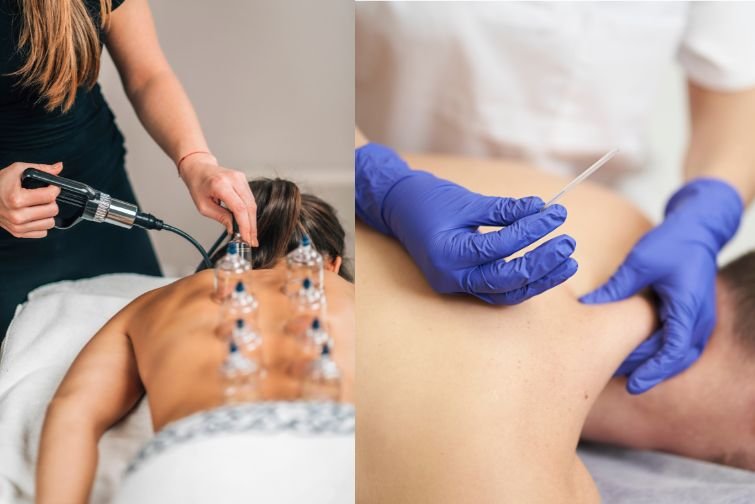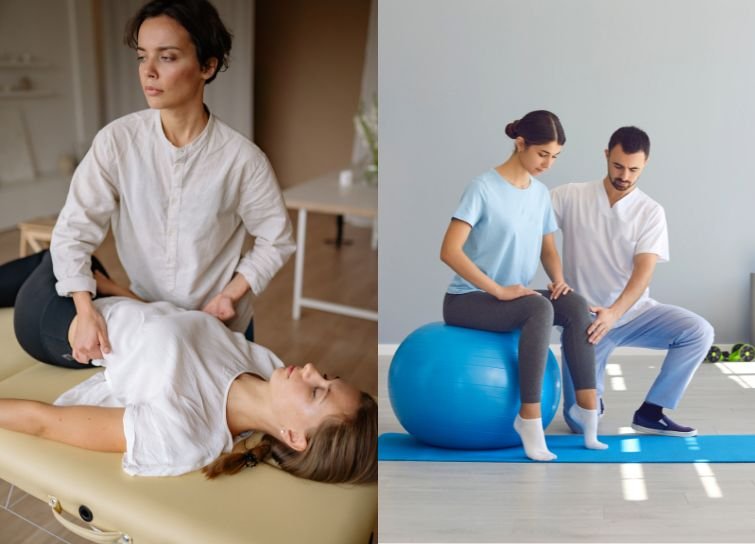Cupping Therapy vs. Dry Needling: Which Treatment Is Right for You?
admin
December 24, 2024

Dry needling and cupping therapy are two of the most popular alternative therapies for pain management and promoting health. The two approaches are both aimed at musculoskeletal disorders but do it in very different manners. It is important to understand the differences between each of these techniques, their benefits, and any potential disadvantages before deciding which one you want. We’ll examine cupping physiotherapy treatment in pune thoroughly in this article to help you choose the right one for you.
Understanding Cupping Therapy
It is an ancient form of healing that’s been practised for thousands upon thousands of years by many cultures, including Traditional Chinese Medicine. The placement of cups creates a vacuum on the surface, which helps to promote healing and mobilize blood flow. Glass, plastic or silicone cups can be used for the process.
What It Does: The cupping technique works by placing the cups over specific body areas. The skin and tissues are pulled upward by a vacuum created either through heat or mechanical means. It increases blood circulation in the affected area and reduces swelling. The cups are left on for several minutes up to a couple of hours, depending upon the protocol. The two most common types include:
- Cupping: Cups on the skin are used to create a vacuum and pull the skin upwards into the cups. This method is usually used for deep tissue and can cause circular marks to last up to a week.
- Wet Cupping: Along with suctioning, tiny cuts are made in the skin to draw out blood. This is more beneficial for conditions that are chronic or have deep-seated toxic substances.
The Benefits of Cupping Treatment
- Treatment for Pain: Cupping is an effective way to relieve pain, especially chronic pain, from such conditions as fibromyalgia or back pain.
- Increased Circulation: By increasing blood supply to affected areas and reducing muscle tension, cupping helps improve Circulation.
- Cleansing: The suction removes toxins, stagnant blood and other irritants from the body; this can lead to a better overall health.
- Reduce Stress: Patients report that they feel less anxious and more relaxed following a treatment.
Find Cupping Therapy in Pune
If you are in Pune and searching for cupping therapy treatment, many clinics offer this specialized service. Searching for “cupping physiotherapy in pune near me” will help you find practitioners in Pune who offer the Therapy. To ensure high-quality care, check online reviews and seek recommendations from trustworthy sources.
Learn about Dry Needling
It is a new therapy that focuses on relieving myofascial and muscular tension. Dry needling involves inserting thin needles under the skin to trigger muscle points. The dry needling method is not acupuncture. It is founded on Western science principles, as opposed to traditional Chinese medicine.
How it Works:
Dry Needling is used to target trigger points. Trigger points are tight spots within the muscle tissues which can cause pain in other parts of your body. A needle is placed directly in the trigger point and then manipulated; this releases the tension. You can move the needle in a circular motion or hold it still for a few seconds. The procedure stimulates your nervous system; it promotes blood circulation and relieves muscle tension.
The Benefits of Dry Needling
- Relieving Pain: Dry needles can reduce tension headaches, migraines and muscle pain.
- Specific Treatment: This treatment targets trigger points and knotted muscles, so it is suitable for people with an active lifestyle or athletes.
- Rapid Relief: After a single session, many people report relief of pain and increased range of motion.
- No-Invasive: In contrast to more invasive surgeries and procedures, dry needling has minimal side effects.
Cupping Therapy and dry needling: Which is better?
Consider your own preferences and the severity of your illness when deciding whether to opt for cupping or dry needling.
- Chronic Muscle Pain and Tension
- Cupping Therapy may be prescribed for people with inflammation, chronic pain and muscle stiffness. This Therapy can help relieve arthritis, fibromyalgia and other conditions by increasing Circulation and eliminating toxins.
- Dry needling has been shown to be particularly effective at relieving trigger points, muscle spasms, and pain. The treatment is ideal for people with overuse injuries or muscle pain.
- Accessibility:
- Cupping Therapy can be a good option for people who are looking for a holistic way to relieve stress and pain. You may prefer cupping if you are looking for a treatment that is more ancient or traditional.
- Dry needling may be available more easily at physiotherapy centres, and it is frequently recommended by sports and exercise physiotherapists because of its effectiveness in treating active individuals.
- Comfort and Tolerance
- Cupping uses suction cups, which may cause temporary redness or bruising. Cupping is the best option for those who are allergic to needles and/or sensitive.
- The first time you use it, the needles may be uncomfortable or cause soreness. Working with a trained practitioner is important in order to reduce pain and negative reactions.
The benefits of dry needling, as well as cupping, are distinct. They both help with pain, muscle recovery, and general wellness. It depends on what each individual needs and wants, how much pain they have, and whether or not they are comfortable with either treatment. In Pune, physiotherapy cupping can be a great way to get relief. Consider the benefits of each treatment, as well as any potential downsides. This will help you make an educated decision on which Therapy is best for your situation.
Frequently Asked Questions
Can cupping treatment treat certain conditions?
The Therapy can be used to treat chronic pain and muscle stiffness. It is also effective at treating inflammation as well as stress-related diseases such as arthritis and fibromyalgia.
Can cupping be performed safely?
It is safe to perform cupping by certified practitioners. The treatment may temporarily cause bruising or redness.
Request a call back
Featured







